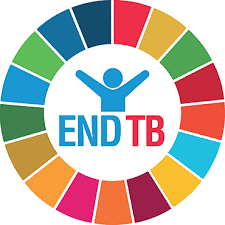
Why addressing food loss and waste is so important
Food loss and waste is a big deal. Roughly one third of all food produced for human consumption is never eaten. This has tremendous economic, social, and environmental impacts.
According to UN Food and Agriculture Organization estimates, the amount of food that is lost and wasted could feed 1.26 billion hungry people every year.1
When food is lost or wasted, not only is it not available to hungry people, but all the energy, resources, and money that went into producing, processing, packaging, and transporting it are wasted, too. Producing uneaten food squanders a whole host of resources -- seeds, water, energy, land, fertilizer, hours of labour, financial capital -- and generates greenhouse gases at every stage.
Ensuring that more of the global food supply is used to feed people, rather than perishing or ending up in landfills, is an important strategy for addressing global hunger. Moreover, according to Project Drawdown, reducing food loss and waste is the single best strategy for reducing emissions and fighting the climate crisis.2
Reducing food loss and waste addresses three of the UN's Sustainable Development Goals: Goal 2: Zero Hunger, Goal 12: Responsible Consumption and Production, and Goal 13: Climate Action. The SDGs call for cutting food loss and waste in half by 2030.3
Loss vs. Waste
Food loss and waste are often spoken of together, but “loss” and “waste” are two different problems requiring very different solutions.
Food loss refers to loss at or near the farm and in the supply chain, for example, due to damage or spoilage during harvesting, storage, or transport.
Food waste refers to food that doesn't get eaten because it is discarded. Waste occurs at the retail level (grocery stores), in hospitality (restaurants, hotels, caterers, etc.) and, frankly, in each of our households. Household habits account for nearly 570 million tonnes of food wasted each year globally, according to the United Nations Environmental Programme. In personal terms, each of us, on average, is wasting around 74 kg (163 pounds!) of food at home every year. 4

We all can play our part
Because food loss and waste happen at every stage of the supply chain, everyone has a vital role to play in addressing this issue: governments and policymakers, farmers, food processors, food distributors, restaurants, retailers, and individual households. Taking action at all levels is critical in building food security and fighting climate change. Reducing food loss and waste is a solution we can all sink our teeth into.
Dig Deeper…
- The Global Benefits of Reducing Food Loss and Waste, and How to Do It Read this comprehensive article from World Resources Institute to better understand the causes of food loss and waste and the solutions available to us right now.
- Three Ways to Tackle Food Loss and Waste in Africa Read this article from World Resources Institute to learn about the potential in "circular food systems" where nothing is wasted.
- Food Waste: The Hidden Cost of the Food We Throw Out Watch this 5-minute animated video from ClimateScience – suitable for sharing with the children in your life to spark a conversation about food loss and waste.
Check out these Canadian initiatives to reduce food waste and share surplus food:
- Love Food Hate Waste Canada works to inspire and empower Canadians to make their food go further and waste less. Check out their analysis of food waste in Canadian homes and then browse their website to find practical tips to cut your household food waste.
- Second Harvest is Canada's largest food rescue organization and a global research and thought leader on food waste. Explore their website to learn more about their food rescue, research, education, and meal programs.
Did you know? September 29 is the International Day of Awareness of Food Loss and Waste (IDAFLW) Click here for ideas of how you can get involved and raise awareness in your community.
[This is the eighteenth installment in GRAN's Small Sips series on The Right to Food.]



